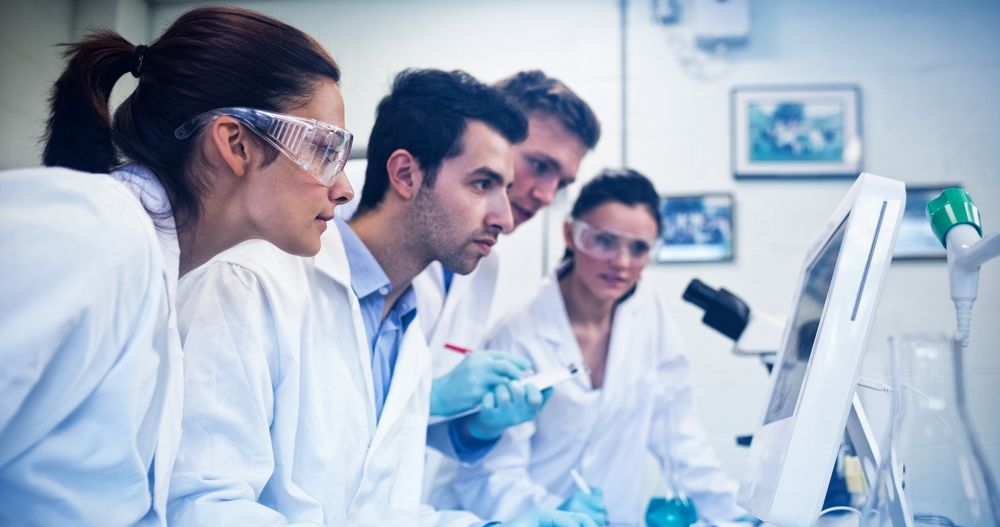International Osteoporosis Foundation Recognizes Research in Hypoparathyroidism

The International Osteoporosis Foundation (IOF) recently launched Skeletal Rare Diseases Academy, recognizing two researchers with awards for their work in hypoparathyroidism-associated bone changes and pregnancy outcomes.
The awards, intended to recognize research excellence among young scientists in the field of rare bone disorders, were announced recently during the Virtual 2020 World Congress on Osteoporosis, Osteoarthritis and Musculoskeletal Diseases.
Members of the Academy selected five researchers (two for work in hypoparathyroidism), who each were awarded a certificate and a $1,000 grant in recognition of their outstanding studies.
“We sincerely congratulate the investigators of the winning abstracts for their excellent research which provides valuable new insights into the [underlying mechanisms], diagnosis, and management of rare skeletal disorders,” Nicholas Harvey, MD, PhD, IOF’s chair of scientific advisors committee and co-chair of the Academy, said in a press release. Harvey also is a professor of rheumatology and clinical epidemiology at the University of Southampton, in the U.K.
One of the winning young scientists was Jing Liu from the Peking Union Medical College Hospital, in Beijing, who presented the poster “Bone microstructures of adult patients with post-surgical hypoparathyroidism and non-surgical hypoparathyroidism” (abstract P839).
The study sought to assess whether bone structure varied between people with hypoparathyroidism associated — or not — with surgery in the neck region (where the parathyroid glands are located), since they show different risk of fractures.
The bone microstructure of 110 adults with hypoparathyroidism (94 with non-surgical and 16 with surgery-related disease) was analyzed using a non-invasive technology called high-resolution peripheral quantitative computed tomography (HR-pQCT).
A similar analysis was performed on age- and gender-matched healthy volunteers.
Results showed that hypoparathyroidism patients had extensive changes in bone microstructure, compared with healthy people. Such changes were more pronounced in patients whose disease was not associated with surgery.
In addition, women with non-surgical disease had greater density and lower separation of the trabecular region of the tibia (shinbone) than controls. The trabecular bone makes up the internal part of bones and has a spongy appearance, with numerous large spaces that usually are filled with marrow and blood vessels.
This was “the first study to reveal the significant differences in bone microstructures between patients with [surgical-related hypoparathyroidism] and [disease not associated with surgery], which provided disease-specific data on metabolic bone profiles,” the researchers wrote.
The full study was published recently.
Award winner Gemma Marcucci, from the University of Florence, in Italy, presented the poster “Management of hypoparathyroidism and pseudohypoparathyroidism during pregnancy: a retrospective observational study” (abstract P1097).
Given the limited number of case reports or case series on pregnant women with hypoparathyroidism or pseudohypoparathyroidism, the study was designed to evaluate the clinical course, pharmacological management, and adverse events (side effects) of either disease in women who had at least one pregnancy.
In contrast to hypoparathyroidism patients, people with pseudohypoparathyroidism (also called Albright hereditary osteodystrophy) produce normal levels of parathyroid hormone. However, they lack the receptors that respond to the hormone, leading to symptoms similar to hypoparathyrodism.
These women were followed from 2005 to 2018 at nine referral endocrinology centers that were part of the Italian Society of Endocrinology’s “HypoparaNet” research group (HypoPT) working group.
A total of 34 women had chronic hypoparathyroidism (30 cases associated with a surgery) and six had pseudohypoparathyroidism. Full data could be collected from only three participants with pseudohypoparathyroidism.
Results showed that while more than 82% of women with either disease had a natural pregnancy with full-term birth, previous history of spontaneous miscarriages was reported by 26.5% of those with hypoparathyroidism, and by 66.7% of pseudohypoparathyroidism patients.
Pregnancy complications occurred in eight women with hypoparathyroidism — the most common being pre-eclampsia, premature birth, and gestational diabetes. No woman with pseudohypoparathyroidism experienced pregnancy complications.
Newborn complications were reported in a child born to a hypoparathyroidism patient and in two newborns of women with pseudohypoparathyroidism.
Doses of calcium and calcitriol (the active form of vitamin D) supplementation during pregnancy were increased significantly in most women of both groups, compared to the pre-pregnancy doses.
This was associated with a general maintenance of calcium blood levels within the normal range and a reduction in hypoparathyroidism-related symptoms during pregnancy. No bone fragility was reported during this period.
However, other biochemical parameters, such as urinary 24-hour calcium levels and blood levels of phosphate, magnesium, and the vitamin D by-product 25(OH)D tended to be poorly controlled during pregnancy and breastfeeding, the team said.
“In the future, an accurate biochemical monitoring will need to be improved in hypoparathyroid women during these specific conditions, also in the light of the new guidelines regarding the management of HypoPT [hypoparathyroidism] in pregnancy,” the researchers wrote.
“Prospective investigations in women with HypoPT and pseudo-HypoPT during pregnancy and breastfeeding will be necessary in order to enhance the knowledge about biochemical alterations, maternal and fetal clinical manifestations, bone complications, and to improve the quality of care available today,” they concluded.
“Although there is still a long way to go, our hope is that with increasing knowledge we will be able to significantly advance patient management from diagnosis to treatment,” said Maria Luisa Brandi, MD, PhD, co-chair and convener of IOF’s Skeletal Rare Diseases Academy and IOF board member. She also is the senior author of Marcucci’s study.






